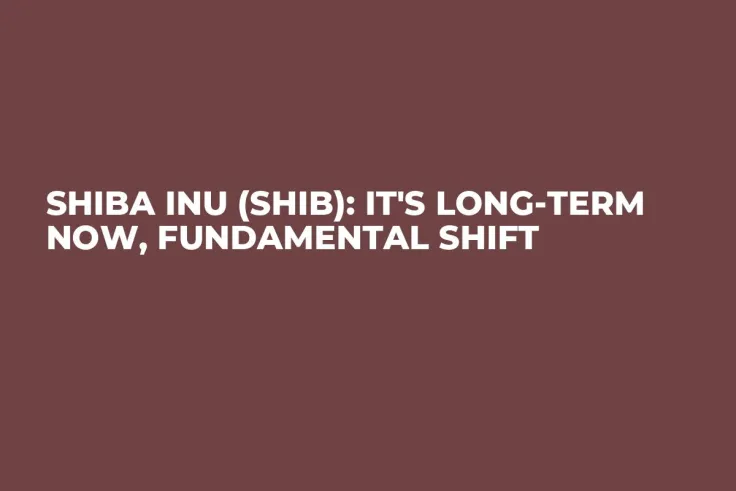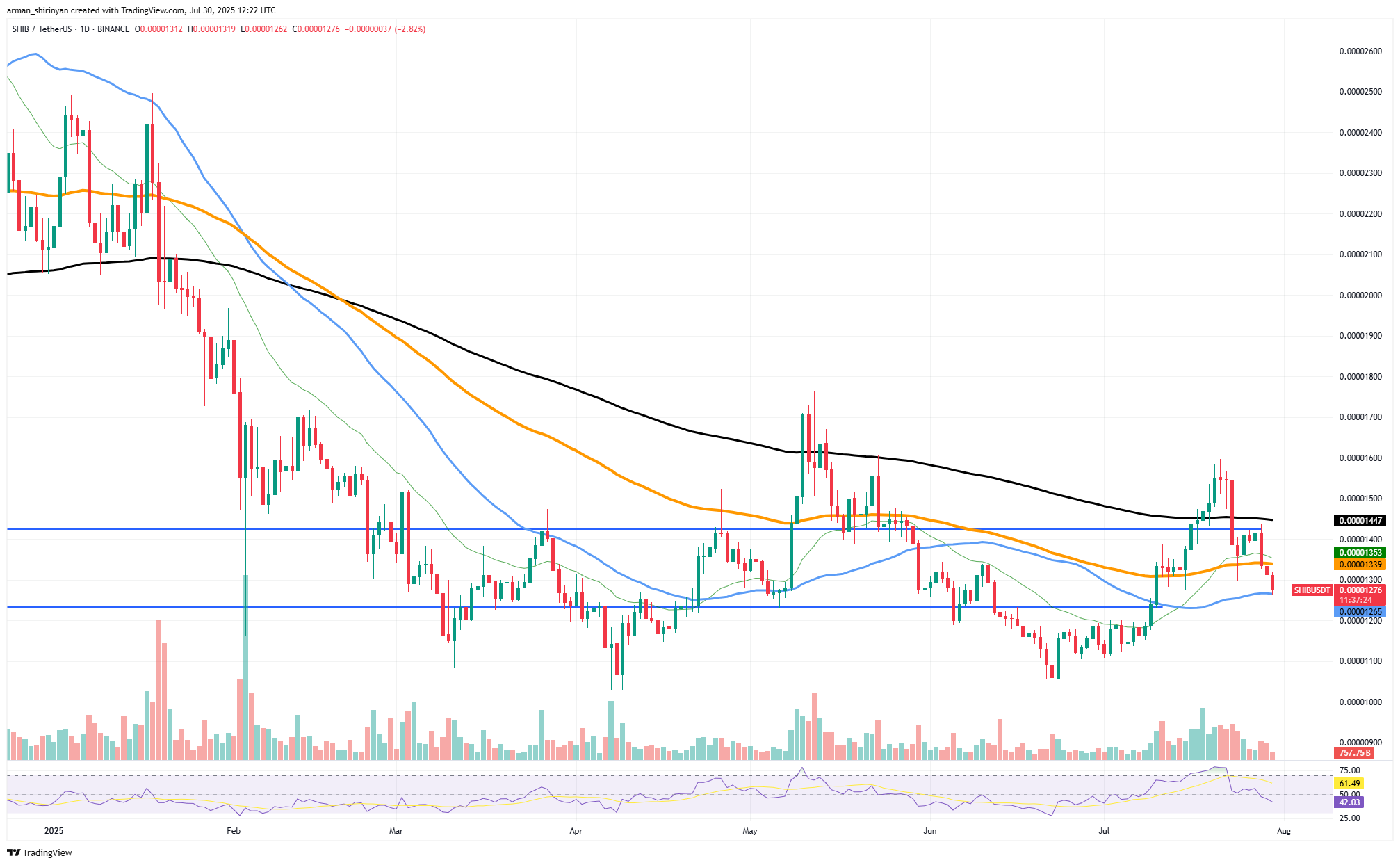
Disclaimer: The opinions expressed by our writers are their own and do not represent the views of U.Today. The financial and market information provided on U.Today is intended for informational purposes only. U.Today is not liable for any financial losses incurred while trading cryptocurrencies. Conduct your own research by contacting financial experts before making any investment decisions. We believe that all content is accurate as of the date of publication, but certain offers mentioned may no longer be available.
A mixed but instructive picture is painted by Shiba Inu's recent price performance. SHIB has entered a sharp correction after failing to maintain a breakout above the resistance level of $0.00001447. It is currently hovering around $0.0000126 and is in danger of breaking through the 50-day moving average. Technical indicators indicate more downward pressure, and a move toward the $0.000011 support zone appears likely if bulls do not intervene quickly.
Structural SHIB shift
Beyond the fluctuations in price, however, a more profound and structural shift is taking place — one that essentially changes the way SHIB functions as a market asset. Nearly 80% of all SHIB is currently held by long-term investors, as indicated by data from IntoTheBlock (wallets holding for more than a year). For a token that first prospered on speculative hype and transient rallies, this is a startling evolution.

In contrast to the more than 10% decline in short-term traders over the past year, the proportion of holders with one year or more has remained stable and is even increasing. This sustained dominance brings stability, which SHIB has not had in the past. Violent downward swings are less common when the majority of tokens are locked up in long-duration addresses, which reduces the likelihood of large-scale dumping.
Is it that good?
It also increases resilience in times of market volatility, when 80% of the supply is dormant. SHIB just cannot move as easily. This shows that new capital and speculative interest in the SHIB ecosystem are slowing down. There is less buying pressure during rallies when there are fewer short-term players, which may account for the poor follow-through following recent gains.
Shiba Inu is essentially going through a transitional stage. It is evolving into a passive long-term asset for many people, not just a meme-driven gamble. Because of this, it may be less explosive but also more dependable. The days of traders experiencing 100% daily spikes might be over. Long-term holders are beginning to see it less as a moonshot and more as a silent wager on societal conviction and slow adoption.

 Dan Burgin
Dan Burgin Tomiwabold Olajide
Tomiwabold Olajide Caroline Amosun
Caroline Amosun Gamza Khanzadaev
Gamza Khanzadaev